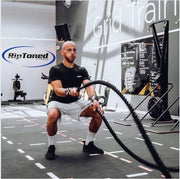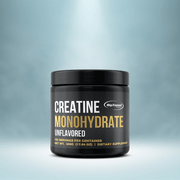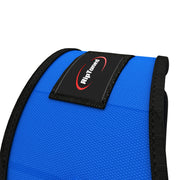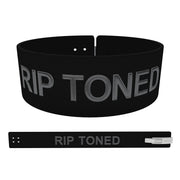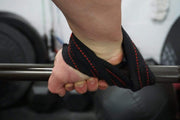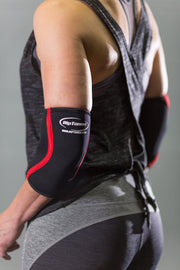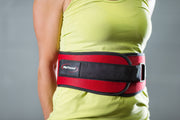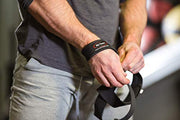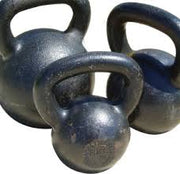Carpal tunnel syndrome is a common condition that affects the hand and wrist, causing pain, numbness, and tingling sensations. It occurs when the median nerve, which runs from the forearm to the hand through a narrow passageway in the wrist called the carpal tunnel, becomes compressed or irritated.
However, while carpal tunnel syndrome primarily affects the hand and wrist, it can also have an impact on other parts of the arm, including the elbow. In this article, we will explore the potential effects of carpal tunnel syndrome on the elbow and discuss how it can be managed and treated.
What is the Carpal Tunnel?
The carpal tunnel is a narrow passageway in the wrist that houses the median nerve, as well as tendons that control the movement of the fingers and thumb. The walls of the carpal tunnel are made up of bones and connective tissue, with a ligament serving as its roof.
When the tendons in the wrist become swollen or inflamed, they can put pressure on the median nerve, causing it to become compressed or irritated. This compression results in the symptoms commonly associated with carpal tunnel syndrome, such as pain, numbness, and tingling in the hand and fingers.
Also, the carpal tunnel is not just a single structure - it is connected to other structures in the arm, including the tendons and muscles that control the movement of the hand and fingers. This connection means that any issue affecting these structures can also impact the carpal tunnel and potentially affect the elbow.
Can Carpal Tunnel Affect The Elbow?
While carpal tunnel syndrome primarily affects the hand and wrist, it can also affect the elbow in a few different ways.
One possible way is through referred pain, which occurs when pain is felt in one part of the body even though the actual source of the pain is located elsewhere. In this case, carpal tunnel syndrome may cause pain to radiate up the forearm and into the elbow, making it seem like the elbow is directly affected.
Another potential way that carpal tunnel syndrome can affect the elbow is through compensatory movements. When the hand and wrist are experiencing pain or discomfort, individuals may alter their movements to avoid aggravating these symptoms. This can lead to overuse of other parts of the arm, including the elbow, which may result in pain and strain in that area.
Additionally, carpal tunnel syndrome can also impact the muscles and tendons in the forearm, which are connected to the elbow. When these structures become inflamed or irritated, it can lead to conditions such as a golfer's elbow or tennis elbow, which can cause pain and discomfort in the elbow.
Managing and Treating Carpal Tunnel Syndrome
If you are experiencing symptoms of carpal tunnel syndrome, it is important to seek medical advice for proper diagnosis and treatment. In addition to traditional treatments such as wrist splints, physical therapy, and medication, there are also non-invasive options such as acupuncture that have been found to be effective in managing the condition.
When it comes to treating the impact of carpal tunnel syndrome on the elbow, a combination of therapies may be recommended, depending on the individual's specific symptoms and needs. This may include addressing any underlying issues with the carpal tunnel, such as swelling or inflammation, as well as providing relief for elbow pain and discomfort.
Plus, making lifestyle changes such as taking frequent breaks to rest the hand and wrist during repetitive activities, using proper ergonomic techniques, and incorporating exercises to strengthen the muscles in the forearm can also help alleviate symptoms and prevent further impact on the elbow.
Is WRIST WRAPS Beneficial For Carpal Tunnel Syndrome?
Wrist wraps are a type of supportive gear commonly used by athletes and individuals with hand and wrist injuries or conditions. They provide compression, stability, and support to the wrist, which can be beneficial for those suffering from carpal tunnel syndrome.
While wrist wraps do not directly treat carpal tunnel syndrome, they can help alleviate symptoms such as pain and discomfort by providing additional support to the wrist. This can help reduce strain on the carpal tunnel and decrease pressure on the median nerve, potentially reducing symptoms in both the hand and elbow.
However, it is important to note that wrist wraps should not be relied upon as a sole treatment for carpal tunnel syndrome or any other condition affecting the hand and wrist. It is always recommended to consult with a medical professional for proper diagnosis and treatment recommendations.
Mistakes to Avoid
When dealing with carpal tunnel syndrome, it is important to avoid certain mistakes that can exacerbate symptoms and potentially worsen the condition. These include:
- Ignoring symptoms and not seeking medical advice
- Continuing activities that aggravate symptoms without making necessary changes or modifications
- Overusing the affected hand and wrist without taking breaks or incorporating rest techniques
- Using the wrong type of wrist support, such as a brace that is too restrictive or doesn't provide enough support
- Not addressing underlying issues, such as poor posture or repetitive strain injuries, which may be contributing to carpal tunnel syndrome.
- Neglecting to incorporate exercises or stretches to improve strength and flexibility in the hand, wrist, and forearm muscles.
By avoiding these mistakes and working closely with a medical professional, individuals can better manage their carpal tunnel syndrome symptoms and reduce their impact on not just the hand and wrist but also the elbow.
Tips and Tricks for Prevention
While carpal tunnel syndrome can be managed and treated, it is always better to prevent it from occurring in the first place. Here are some tips and tricks to help prevent carpal tunnel syndrome:
- Incorporate frequent breaks when performing repetitive tasks involving the hand and wrist.
- Use proper ergonomic techniques, such as keeping wrists straight while typing or using a mouse.
- Avoid overexerting the hand and wrist by using proper grip techniques inside of the elbow and taking breaks when feeling fatigued.
- Incorporate strengthening exercises for the hand, wrist, and forearm muscles to improve overall strength and flexibility.
- Maintain good posture while sitting or standing to reduce strain on the upper body, including the hands and wrists.
- Use wrist support, such as a brace or wrap, during activities that may put strain on the hand and wrist.
By following these prevention tips and tricks, individuals can lower their risk of developing carpal tunnel syndrome and maintain optimal hand and wrist health. However, if symptoms do occur, it is important to seek medical attention for proper diagnosis and treatment.
FAQs
Can carpal tunnel affect the elbow?
Yes, carpal tunnel syndrome can affect the elbow. When the median nerve, which runs through the carpal tunnel in the wrist, becomes compressed or irritated, it can cause symptoms that radiate up the arm and into the elbow joint. This can lead to pain, tingling, and numbness in the forearm, as well as weakness and muscle wasting.
What is cubital tunnel syndrome?
Cubital tunnel syndrome, also known as ulnar nerve entrapment, is a condition where the ulnar nerve becomes compressed or irritated at the elbow. It can cause similar symptoms to carpal tunnel syndrome, such as pain, tingling, and numbness in the ring and little fingers. Repetitive motions may cause cubital tunnel syndrome, prolonged pressure on the elbow, or anatomical abnormalities like bone spurs.
How is cubital tunnel syndrome diagnosed?
To diagnose cubital tunnel syndrome, a healthcare professional will typically perform a physical examination and evaluate symptoms. They may also recommend a nerve conduction test, which measures the speed and strength of electrical signals in the nerves. This test helps determine the extent of nerve compression and any potential damage.
What are the treatment options for cubital tunnel syndrome?
Treatment options for cubital tunnel syndrome may vary depending on the severity of the condition. Initially, conservative measures such as resting the elbow, avoiding repetitive motions, and using splints or braces may be recommended. Physical therapy, including nerve gliding exercises, can help alleviate symptoms. In more severe cases, surgery, such as ulnar nerve transposition or cubital tunnel release, may be considered to relieve nerve compression and improve carpal tunnel symptoms. It's important to consult with a healthcare professional to determine the most appropriate treatment plan based on individual circumstances.
Conclusion
In conclusion, carpal tunnel syndrome can have a significant impact on not just the hand and wrist but also the elbow. By understanding how carpal tunnel syndrome can affect the elbow and utilizing various management and treatment options, individuals can better manage their symptoms and prevent further complications.
Wrist wraps may be beneficial in providing support and reducing symptoms for those with carpal tunnel syndrome. Still, it is important to consult with a medical professional for proper treatment recommendations.
By avoiding common mistakes and incorporating prevention techniques, individuals can also lower their risk of developing carpal tunnel syndrome and maintain overall hand and wrist health.





